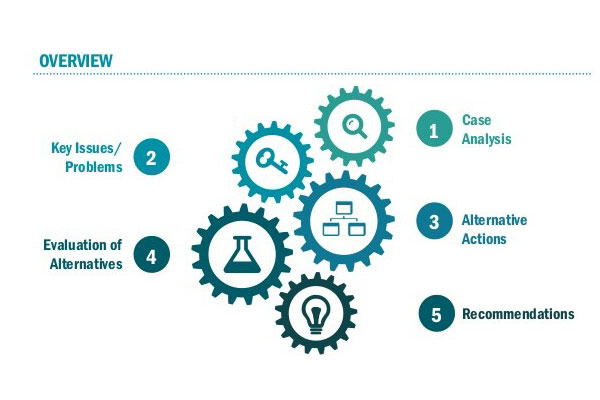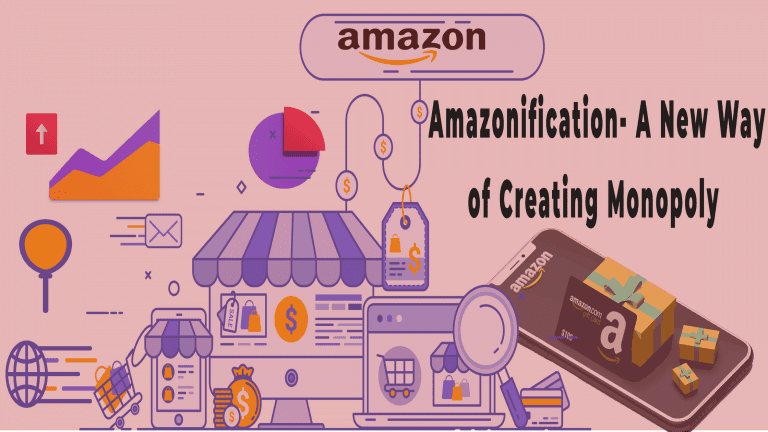The tech transformation has transformed the manufacturing industry and other service sectors by enabling a customizable production process and indeed the dematerialization of the purchasing process. Online sales are becoming increasingly popular in the global marketplace.
Over the world, online sales are around $3.5 trillion with a 20 percent rise in 2019. The rise in online sales in 2020 (32.4%) may have been aided by the recent outbreak of the Covid-19 epidemic. Amazon now controls over 40% of all e-commerce in the United States, and is responsible for more than half including all retailing growth over the previous five years.
This huge growth also creates market monopoly & Amazon dominance in the market for the past 3/4 years. Moreover, this also ensures the monopolistic supremacy of Amazon in almost every sector.
Amazonification

A new term gaining sensation in journalism is Amazonification, which refers to the Amazon business operations and how it is used. But these tales have had a pattern: neither of these are accidental or irrational. Amazon, in contrast, prefers to take a bit of time to deeply embed itself in the market, carefully assessing all of the dangers and opportunities before releasing a statement.
The meaning of Amazonification varies, but it generally applies to when a powerful entity like Amazon steps in and forces all other participants to innovate in order to stay up. Amazon’s dominance in innovation is obvious from its dominance in the coming years.
The term “Amazonification”is often used to signify the significant change in e-commerce web pages and physical vendors that has occurred, where the web pages and physical vendors are “somewhat like Amazon.” However, the Amazon effect also signifies the tremendous effect on consumer perceptions and preferences.
Market Monopoly

Monopolies are companies that have a lock on their industry. Monopolies are frequently described as businesses with almost ultimate control of such a marketplace. Monopolies are a possible outcome of a completely free market, when the absence of restrictions or constraints causes a single firm or group to dominate the market for a certain good or service.
However, the government may also help create and maintain monopolies, as when laws hinder competition, as in the context of utility companies. Natural monopolies are created when a business has an exclusive copyright on its services and goods or when it has extreme obstacles to entry.
Monopolies are marked by the lack of competition, which may result in exorbitant prices for customers, subpar goods and services, and dishonesty in business dealings. One firm that has a monopoly on a specific industry may exploit its position at the cost of its rivals. It can manipulate the pricing of goods and control the flow of resources, all without interfering with basic economic principles.
About Amazon

Amazon.com, an e-commerce store, maker of digital books, and Online services provider that, as the quintessential example of ecommerce, has sold merchandise over the Internet since 1995. The corporation’s base is in Seattle, Washington. Amazon is the largest online business by revenue in the world. He was unaware that the easiest approach to do well in the internet market was to become large and quickly. Amazon.com, the company better known as Amazon, was formed in August of 2005 by its current CEO, Jeff Bezos.
Amazon began as an online bookstore, which only sold books. The advancement about this at the period was significant, and few businesses were as competitive as Amazon.com when it came to convenience. The business moved from selling goods into the computer and music industry in 1998. Amazon additionally diversified its market abroad at this time by acquiring other online booksellers throughout the UK and Germany.
Amazon started selling its Echo and Alexa gadgets in June 2015, having spent three years creating them. For a while, the concept of a virtual assistant in the house seemed thrilling and new, but no one had any clue that it would develop so quickly. Amazon employed 30,000 comprehensive US workers in 2011, although by the ending of 2016, 180,000 people were employed full-time.
Amazon will keep up its efforts to push the boundaries as an innovation leader and a disruptor. The success of Amazon rests on its ability to provide appropriate ideas, to surpass customers’ expectations, and to remain profitable. Now consumers expect to have the papers they need in a few days or even hours, instead of having to wait a long time. By developing a whole new approach to retail, Amazon has forced competitors to remain competitive to stay in business.
Amazonification & Creation of New Monopoly
Amazon is not a monopoly, according to conventional definitions, since its market share is not high enough. Products and services provided by a monopolistic company tend to be more expensive and have less competition, according to the traditional definition.
Although Amazon is not causing inflation, it is certainly helping to fuel the deflationary tendencies that have plagued the market for the past decade. On the other hand, Amazon might easily evolve into a vertical monopoly that makes it impossible for other businesses to compete with it, purchasing along and down the chain of command.
Regardless of the price of goods, Amazon’s retail initiatives will greatly affect both customers and producers, since Amazon has total control over all supply chains. Customers would not even know that Amazon has seized control of the market via its reduced prices.
Amazon may be trying to redefine the term monopoly in the process. “Monopsony” is a term which is being used to characterize Amazon’s monopoly. Monopsonists are able to push down the prices that providers may charge by using their market dominance. Additionally, Amazon is a very apparent and influential monopoly in the market today.
How Amazonification Create Business Monopoly

Amazon is employing its dominant market position to monopolize the marketplace and dominate various industries, which has left others with a less varied and creative economy and less chances for small companies to launch and develop. Amazon invests its considerable economic resources in marketing and selling a variety of goods below cost in order to eliminate rivals with less capabilities and bring prime members within its ecosystem, which discourages them from going elsewhere.
Amazon controls the market through Amazonification, which replaces the free market. Amazon has a monopoly on online customers because of its Amazon Prime program, which forces all manufacturers and merchants towards becoming third-party merchants on its website. And Amazon is also the first stop for half of all internet searches. Amazon’s Amazonification effect gives it the ability to restrict rivals by dictating conditions and levying a sort of tax on their income.
Amazon uses the competition between its retail and online platform parts to dominate suppliers. Amazon’s increased taxes on suppliers make it harder for them to come up with new goods. Amazon is also aggressively extending its product range while at the same time exploiting the data it collects from its network to recognize its suppliers’ businesses and actively compete with them. The Amazon items that show at the front of its own search results are numerous.
Amazon forces its rivals to play by its rules. Amazon competes with others in the marketplace and establishes the conditions for how they may enter by owning essential infrastructure. Independent producers and local merchants have suffered the most damage from the downturn. Amazon has influence over its rivals because it compels them to cooperate with it.
Amazon’s control cannot be fully understood by comparing price and production alone. Because online marketplaces have the fundamentals of an inverted pyramid, a business will seek expansion instead of profits, which has gained favor with investors. Monopolistic tendencies become very reasonable under these circumstances, but the current theory assumes it to be unreasonable and hence improbable.
Furthermore, since internet platforms act as key intermediates, their competitors’ infrastructure is in their hands because of their presence across several market segments. A platform may utilize its knowledge of its clients’ competitors’ activities to weaken them as rivals.
Amazon’s increased control over individual lives is threatening the capacity to make a livelihood and restricting our ability to create value. Many economists believe that the decline in the number of new businesses created over the past decade has worsened the employment market, hurt the country, and made economic inequality harsher.
End Note
Did you know that creation of Amazonification is the well built & pre-planned thoughts of Jeff Bezos & his marketing team to ensure that no matter how low the price of Amazon’s product, Amazon never faces loss in the online marketplace.
In this article, we explained why & how, despite being a small book company, Amazon flourishes in a few years of reign in the online marketplace & become a mammoth of e-commerce.
If you want to learn more about how Amazon succeeds & how you can employ amazonification or how you save your business from amazonification concepts, enroll in our Digital Marketing Course today!
With one of our courses, not only will you become a better marketer but an expert on human behavior too. We offer classes that show you how people think and why they do what they do when it comes to your products or services.
And guess what? You don’t need any previous experience with design tools like Photoshop or Illustrator. Just bring along a laptop with WiFi access, some time for class-related assignments, and your eagerness to learn something new!
There are still a few seats left for the next session, so don’t wait too long before signing up. We hope you enjoyed reading this blog post and learned something new from it.







































